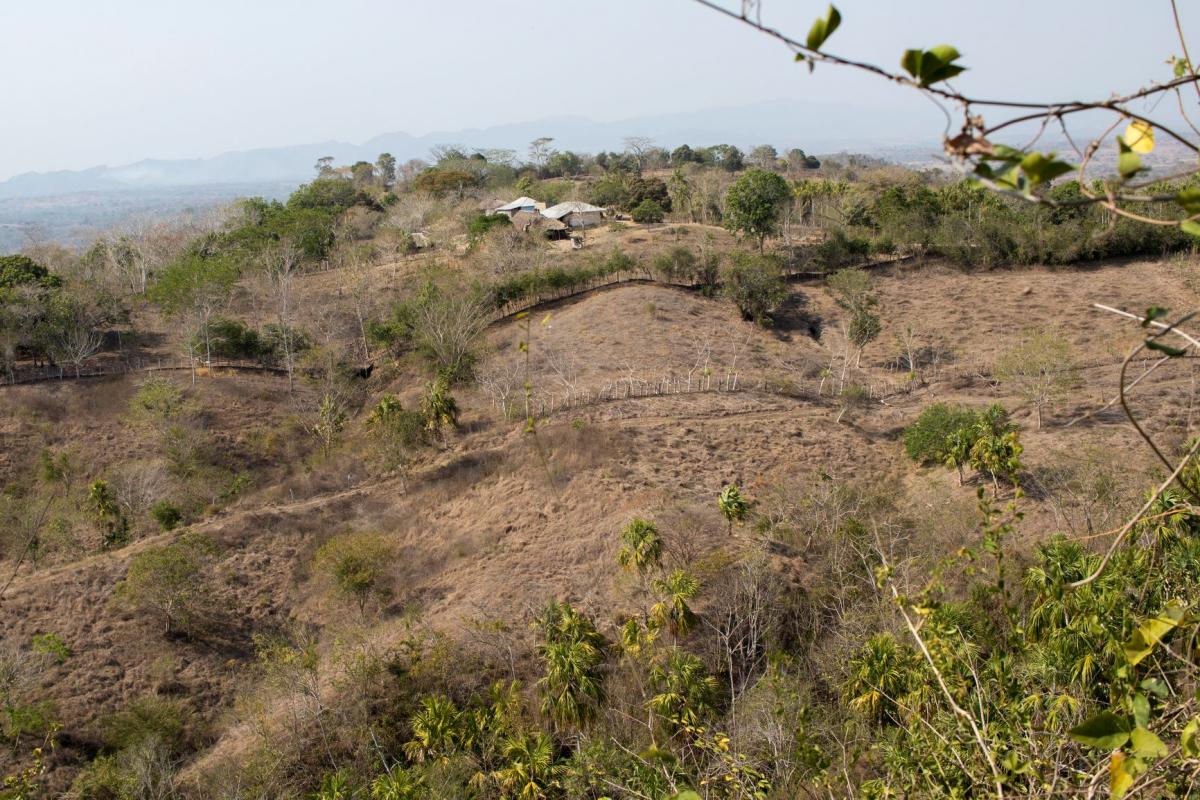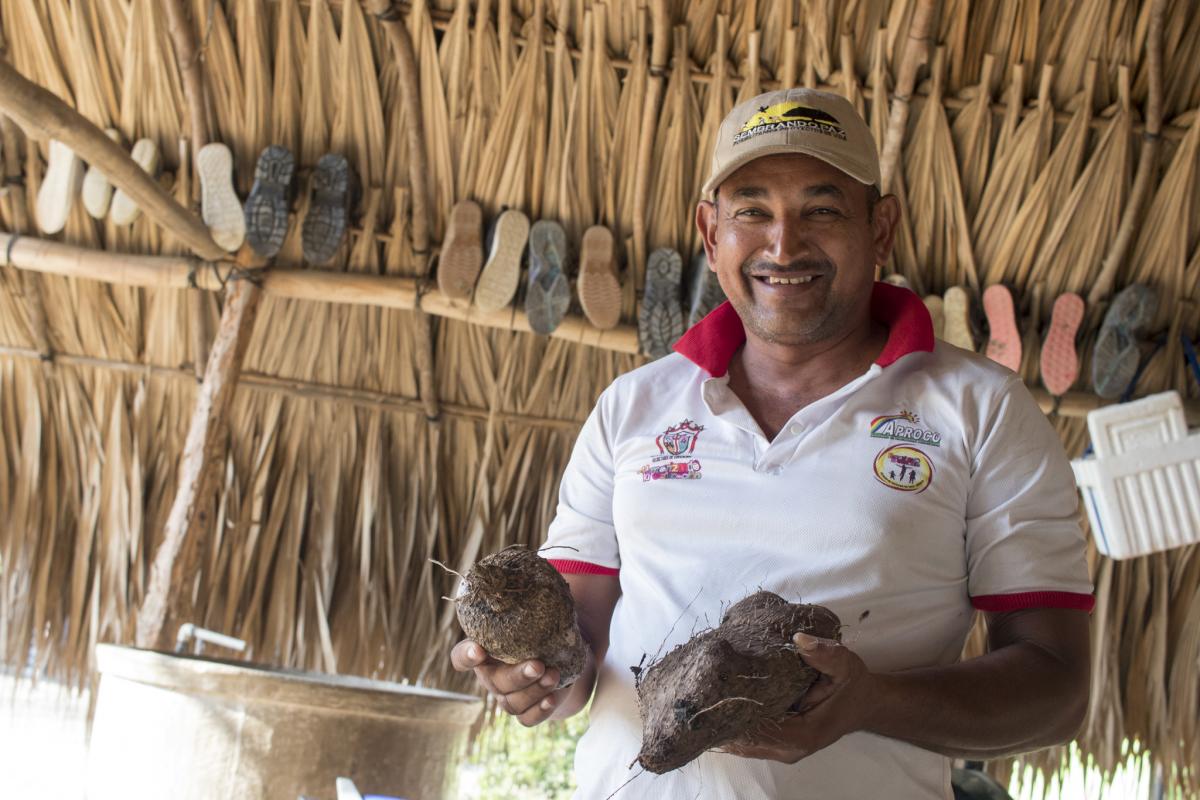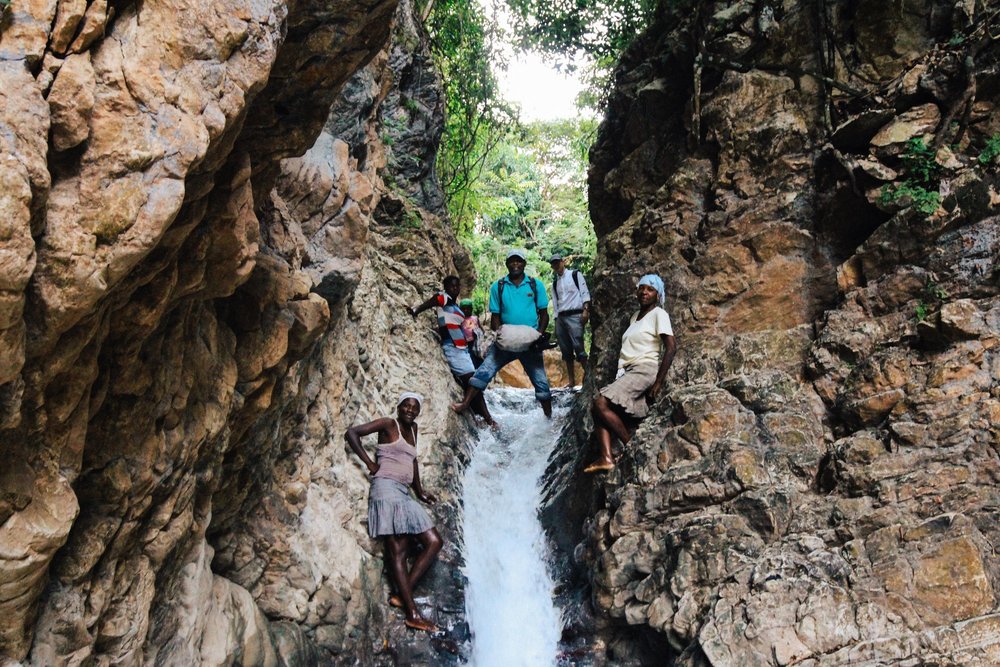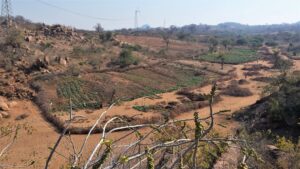If you’ve ever invited me to go camping with you, you’ll know I’m not exactly what you would call “outdoorsy.” I enjoy nature, but I don’t really see the need to sleep in it, much less in a stuffy tent with sticks and rocks poking into my back. I feel the same about hiking—I’m just fundamentally unable to understand the appeal of walking for hours through the woods, tripping on rocks and being pestered by insects, just to turn around and walk back again, having accomplished nothing but getting myself exhausted and sweaty? (Somehow, the long walks I take every weekend in the city feel completely different.)
And then I moved to Haiti. It was as much of a surprise to me as anyone else. I wanted to work internationally, and Mennonite Central Committee (MCC) had a position perfectly matching my skill set open in the small Caribbean country. White sand beaches and coconut palms, I thought. I can handle that.
After I accepted the position, I started reflecting on other realities of life and work in Haiti. I started my orientation by spending three weeks with MCC partner Konbit Peyizan, which at the time was still part of the MCC Haiti program. Many of the communities Konbit Peyizan works with in Haiti’s Artibonite Valley are only reachable on foot. Paths through Haiti’s limestone mountains are often jagged and full of loose stones; the walk to the community of Wopisa, at one point, requires visitors to scale a waterfall. As I struggled along these paths on my first visit to this community, Haitian women three times my age joined our group, many barefoot and balancing baskets or large washing bowls on their heads. When I slipped on steep muddy riverbanks, they reached down to pull me up, laughing—they knew as well as I did that I was far out of my element.
A few days after our visit to Wopisa, Hurricane Irma swept over the Caribbean, causing flash flooding and landslides in many of the rural communities in the Artibonite. Hurricane Maria followed just weeks later, largely sparing Haiti but devastating nearby Puerto Rico. The previous year, Hurricane Matthew had struck Haiti’s southern peninsula, wiping out over 50 percent of livestock and nearly 100 percent of crops in the most affected area. Hurricanes are part of life in the Caribbean, but the frequency and severity of storms like Matthew, Irma, and Maria is something new. Experts attribute the increased intensity of these storms to rising ocean temperatures caused by climate change. And, in a cruel twist of irony, people like the sturdy old ladies who laughed at me on the way to Wopisa, whose lives are completely dependent on the land they live on and who produce little or no carbon emissions, are the ones who are the most exposed to the consequences of this changing climate.
Like so many people I know, I have a complicated relationship with the natural environment. I can enjoy the natural environment, whether in Haiti’s remote mountains or in the lush city parks of Mexico City, where I now live, but I enjoy it on my own terms. Unlike the women on the way to Wopisa, I generally have the ability to insulate myself from its most severe shocks, its discomfort, its occasional violence. In a way, the relationship I have with the natural environment is one of distance and separation—a romanticized relationship with something I really don’t know all that well.
In February, I was back in the Caribbean, this time on the Atlantic coast of Colombia, visiting MCC partner Sembrandopaz (“Sowing Peace”) to learn how the communities in this region are experiencing the impacts of a changing climate. Like many parts of the Caribbean, this area is extremely vulnerable to intense and grinding droughts. As we drove from the airport into the countryside, we passed field after dry, golden field, baking under the Caribbean sun. Grass crunched under our feet as we stepped out of the car.

In 1996, during the height of Colombia’s armed conflict in this region, 12 people in the tiny community of Pichilín were massacred by a paramilitary group. The survivors, terrified, fled, and when they returned to cultivate their land, it was to what many described as “a desert,” deforested and depopulated. Since then, together with Sembrandopaz, the returned residents of Pichilín have been rebuilding their lives and their livelihoods, planting trees, growing gardens, advocating for their rights as victims of the armed conflict.
When I visited, despite the lack of rain, Pichilín was full of trees and flowering plants. At one point, we stopped our conversation to watch a group of monkeys moving back and forth among the highest branches of a nearby stand of trees. The monkeys, I was told, had been displaced by deforestation and land clearing. Now they’re coming back too.
“We have a commitment to nonviolence; no one should be a victim, and no one should be a victimizer,” said Ricardo Esquivia, director of Sembrandopaz. For him, and everyone I spoke to during this visit, nonviolence isn’t limited to relationships between individuals or communities, but encompasses individual and community relationships to the environment as well. Not victimizing the land means guarding forests against clearing and burning, caring for water sources, and teaching young people to treat birds and animals with kindness.

As I listened to the residents of Pichilín and the staff of Sembrandopaz describe their relationship to the land, what I heard was the furthest thing from what I had been familiar with—a distant, romantic relationship that allows for simultaneous idealization and exploitation of the land. Instead, it was a relationship marked not only by the trauma of displacement and the ongoing and ever-worsening realities of a changing climate, but by a deep, intimate sense of interconnection with the natural world. In this way of thinking, human beings aren’t separate from nature, as the romantic-colonial attitude suggests, but part of all kinds of local and global ecosystems.
As the COVID-19 pandemic has spread from one city to the entire world, confining millions of people to their homes, turning our economies upside down and putting thousands of lives at risk, we’re feeling increasingly aware of our connectedness with each other and with our environment. However, our connectedness stretches far beyond this disease. Those of us who live in cities are nourished by food produced in the countryside; fossil fuel production and consumption in the world’s largest economies are causing environmental devastation in its smallest. The list goes on.
If I’m honest, I’m probably not coming around on camping anytime soon. In fact, my very unromantic experiences living without electricity and running water have made me, somewhat predictably, even less eager to give these things up for fun. But what I’ve come to realize is that my connectedness with the natural environment, and the rest of humanity, isn’t dependent on my ability to rough it. For me, it means recognizing the systems that provide me with my food, my water, my electricity, my knowledge. It means learning from the people closest to the land on the frontlines of climate change, recognizing that the deep knowledge and collective experiences of those communities can lead us out of this climate crisis. It means hoping the voices of people in rural, indigenous, and Afro-descendent communities in Latin America and throughout the world will not just be heard, but will lead the conversation. Because if we’re all connected, the decisions we make for the most vulnerable on the frontlines of climate change, in the end, will be to the benefit of us all.
Annalee Giesbrecht is Context Analyst and Advocacy/Communications Support Coordinator for MCC in Latin America and the Caribbean. This reflection originally appeared at mccottawaoffice.wordpress.com.
Related story:
An exciting opportunity






